|
|
|
Hansen's Northwest Native Plant Database |
|
|
|
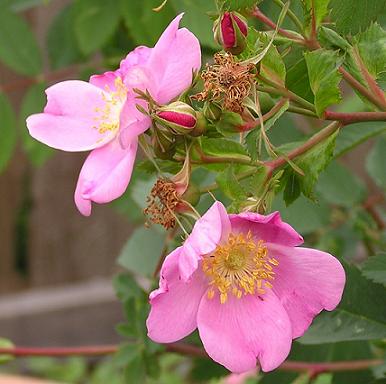 |
||||||||||||||||||||||||||||||
|
A superb native rose, Rosa woodsii has rose-pink flowers in early June. The bright red hips persist throughout winter, and are used as food by birds. A fast grower, the Wood's Rose quickly reaches 4.' It is the hardiest of the natives roses I carry, surviving in the harsh conditions from the Rocky Mountains through the Cascades, USDA zones 4-6. It is drought tolerant, needs little sun and can survive on steep, rocky slopes with little topsoil. An excellent choice for difficult sites. |
|||||||||||||||||||||||||||||||
| The following article was written by Colleen Stuckey, who lives on Vancouver Island, British Columbia, Canada. | |||||||||||||||||||||||||||||||
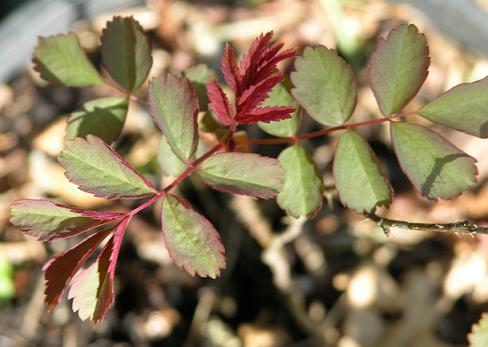 |
Riding horseback through the Rocky Mountains with the blazing sun scorching the dry earth, you can chance upon the most ruggedly beautiful of shrubs – the Wood’s Rose. So delicate the flowers, yet hardy enough to survive the harsh climate, the Wood’s Rose nestles itself into crevices in the rock at the base of the mountains, and along streams and rivers. Here the winter lasts well into May and the spring is but a brief gasp of warmth, followed by the searing heat of the July sun reflected off the towering rock face of the mountains. And yet this fabulous wild rose survives year after year, providing a myriad of birds and mammals with shelter and food. |
||||||||||||||||||||||||||||||
|
|
|||||||||||||||||||||||||||||||
|
Description: At maturity, the Wood’s Rose can reach heights of 6’, but more commonly grow to 3’, with a spread of 3-6’. The leaves are alternate and pinnately compound, with five to nine serrated leaflets measuring ¼ - 21/2” long. The thorns of the Wood’s Rose are straight or slightly curved and tiny, only 1/5 – 1/3” long. The thorns are straighter and generally less troublesome than those of other roses, being less likely to tear skin and clothing. The flowers of the Wood’s Rose are small, only 2-2 ½” wide, ranging in color from light to dark pink and smelling sweet and strong. The shrub is literally covered in blooms, and although each flower generally lasts for only one day, others follow quickly and the entire shrub blooms for many weeks. After flowering, small, round fruit called hips form. The seed, which are covered in stiff hairs that can irritate the mouth and hands, are stored inside the fruit. |
 |
||||||||||||||||||||||||||||||
|
The Wood’s Rose begins to bear flowers and fruit when only 2-5 years old. All wild roses sucker freely and can form dense thickets, the Wood’s Rose in particular. While these stands are impossible for humans to traverse, they form a perfect habitat for small mammals and birds, providing refuge from predators and an ample food supply in the hips and foliage. |
|||||||||||||||||||||||||||||||
|
The name Wood’s Rose comes not from its growing location but from the name of Joseph Woods, a botanist who specialized in roses. “Rosa” means “red” in Latin. Habitat and Range: The Wood’s Rose is found in a wide variety of locations, being a highly adaptable plant. Unlike the Bald-Hip, Nootka and Clustered Rose, it is not found on the coast. It is a far hardier plant, requiring only 150 frost-free days to survive, zones 4 - 6. It grows in boreal and sub alpine forests as well as dry slopes, sandy sites, riverbanks and disturbed sites. Its range is similarly extensive, stretching from Alaska and British Columbia, Canada, in the northwest, east to Alberta, Canada south to Arizona, northern Mexico, western Texas and north to western Kansas and North Dakota. It is evident that this variety can tolerate a wide variety of climates and growing conditions. |
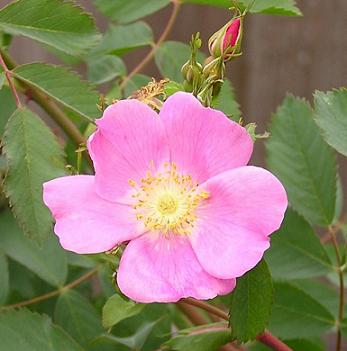 |
||||||||||||||||||||||||||||||
|
Ornamental Value: The Wood’s Rose is an excellent ornamental plant, with its clusters of fragrant flowers, long blooming cycle and stunning fall color. The flowers are spectacular in their shades of light or dark pink, becoming clusters of lovely red hips. In fall the leaves turn hues of red, orange, or purple, depending on the amount of sun at the site: the brighter the location, the more color in fall. |
|||||||||||||||||||||||||||||||
|
Another
interesting facet of the Wood’s Rose is its value as wildlife and
livestock browse. Cattle, sheep, mule deer and other big game as well as
porcupines and beavers all browse the new leaves of the Wood’s Rose,
especially in early spring. This plant is quite capable of withstanding
such browse and will readily resprout. |
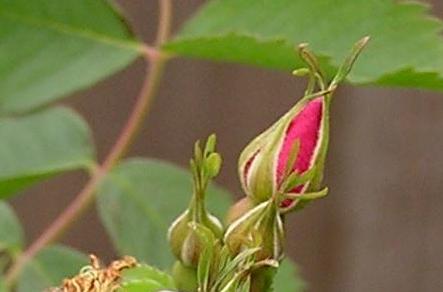 |
||||||||||||||||||||||||||||||
|
|
|||||||||||||||||||||||||||||||
|
Edible and Medicinal Uses: The Wood’s Rose can be used as a food source, provided great care is taken. Positive identification and careful preparation are crucial prior to consuming any wild plant. Do not replace conventional medicine with a wild plant without consulting a health care professional first. Do not over harvest: make sure to leave an adequate supply of plant material for wildlife to feed on and for the plant to set seed. Rosehips are best gathered in the late fall, after a frost, which softens them and increases the sugar content. These can be used to make jams, jellies, teas and syrups. In summer, the petals can be used to garnish cakes or ice cream, tossed in a salad for color or floated in a pitcher of lemonade or elderberry blossom tea. Trim off the bitter white base of the petals before using. |
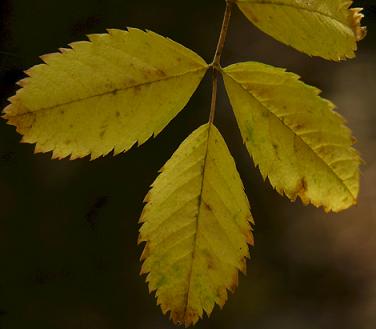 |
||||||||||||||||||||||||||||||
|
|
|||||||||||||||||||||||||||||||
|
A great way to help plants combat disease is to plant garlic or onion sets around the base of rose bushes. Maintaining good air circulation and spraying with compost teas or organic fertilizers are good methods of preventing disease. To make a simple organic fertilizer and disease-preventing brew, fill a bucket halfway with water, then herbs. Cover and let sit in full sun for 48 hours. Strain and dilute with ten parts water to one part putrid brew (just a warning – this smells vile!). A combination of any of the following weeds and herbs can be used: horsetail, comfrey, stinging nettles, borage, nasturtiums, garlic (crush slightly), chamomile or yarrow. All are helpful in maintaining plant health, soil fertility and preventing disease. This is also a great way to use weedy plants that are pulled from garden beds. |
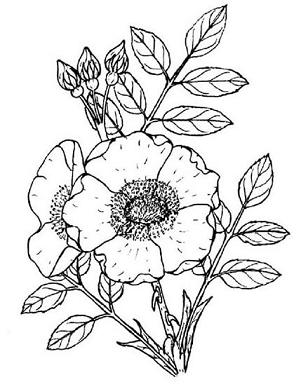 |
||||||||||||||||||||||||||||||
| For a short comparison of northwest native roses, click here. | |||||||||||||||||||||||||||||||
|
Photos We Share!
|
|||||||||||||||||||||||||||||||
|
Bibliography:
Klinka, K.; Krajina, V.J.; Ceska, A.; and Scagel, A.M. Indicator Plants of Coastal British Columbia. Vancouver, British Columbia: University of British Columbia Press, 1989 Pettinger, April. Native Plants in the Coastal Garden: A Guide for Gardeners in British Columbia and the Pacific Northwest. Vancouver, British Columbia: Whitecap Books, 1996 Toogood, Alan. Plant Propagation Made Easy. London, England: Dent Co., 1993 Turner, Nancy J. Food Plants of British Columbia Indians. Victoria, BC: British Columbia Provincial Museum, 1978 Vermeulen, Nico. Encyclopedia of Herbs. Vancouver, British Columbia, 1998 Fire Effects Information, USDA, Forest Services, Rocky Mountain Research Station, Fire Sciences Laboratory, Missoula, Montana. http://www.fs.fed.us/database/feis Plants for a Future (September, 2001) http://www.comp.leeds.ac.uk/pfaf United States Department of
Agriculture, Natural Resource Conservation Service (April, 2002) http://plants.usda.gov Washington State Native Plant Society. 7400 Sand Pt. Way NE, Seattle, WA 98115. (March, 2002) http://www.wnps.org |
|||||||||||||||||||||||||||||||
|